Garden lovers rejoice! Are you looking for a stunning succulent plant that thrives in the UK climate? Look no further than Sedum nussbaumerianum, also known as Coppertone Stonecrop. This perennial succulent is not only drought tolerant but also perfect for landscaping projects. But how exactly do you care for this unique plant and ensure its vibrant beauty graces your garden all year round? Let me share with you my top tips for nurturing Sedum nussbaumerianum in the UK.
Appearance of Sedum nussbaumerianum (Coppertone Stonecrop)

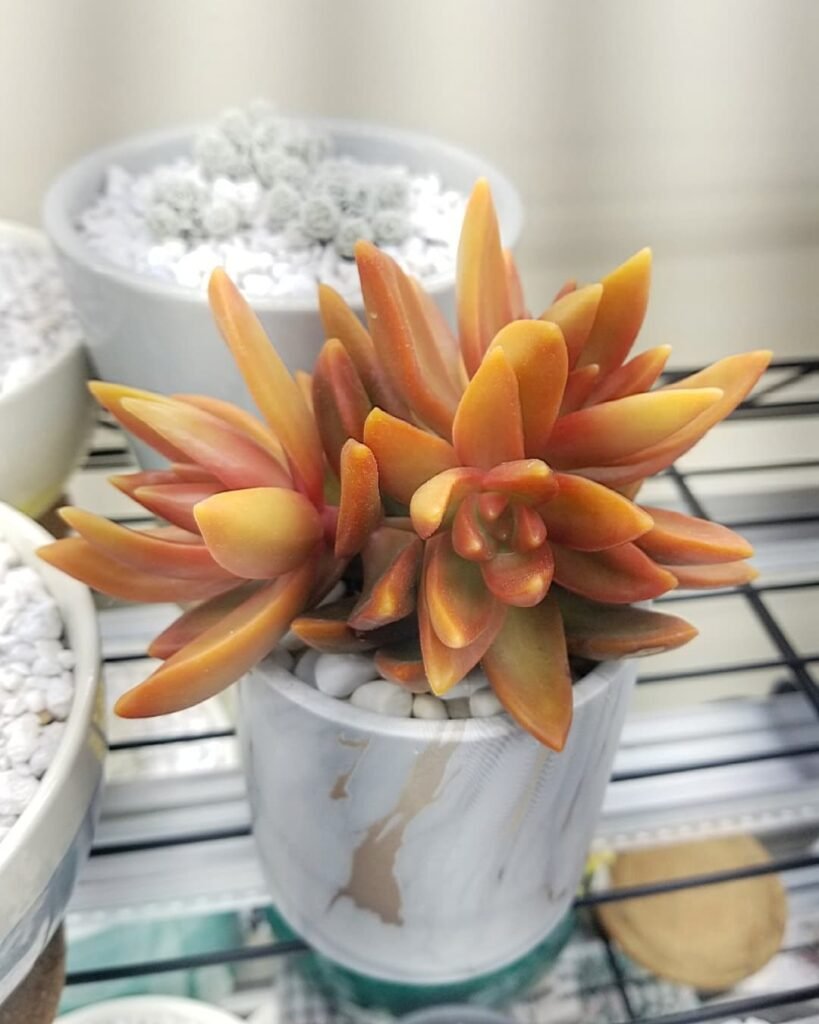
Sedum nussbaumerianum, also known as coppertone stonecrop, is a stunning succulent that boasts a unique and eye-catching appearance. Its foliage consists of fleshy leaves that are arranged around trailing, rooting stems, creating a delicate and intricate mound-forming structure. The leaves themselves are initially green but develop a beautiful orange tint when exposed to dry and bright conditions. This colour variation adds to the visual appeal of the plant, making it a favourite among succulent enthusiasts.
In addition to its attractive foliage, Sedum nussbaumerianum produces clusters of small, starry white flowers. These flowers form domed clusters, creating a lovely contrast against the green and orange foliage. The combination of its captivating foliage and delicate flowers makes Sedum nussbaumerianum a standout choice for any succulent collection or garden.
 The Coppertone Stonecrop turns a coppery-orange in bright sunlight, adding vibrant colour to spaces and offering a captivating seasonal change to observe.
The Coppertone Stonecrop turns a coppery-orange in bright sunlight, adding vibrant colour to spaces and offering a captivating seasonal change to observe.Light Requirements for Sedum nussbaumerianum

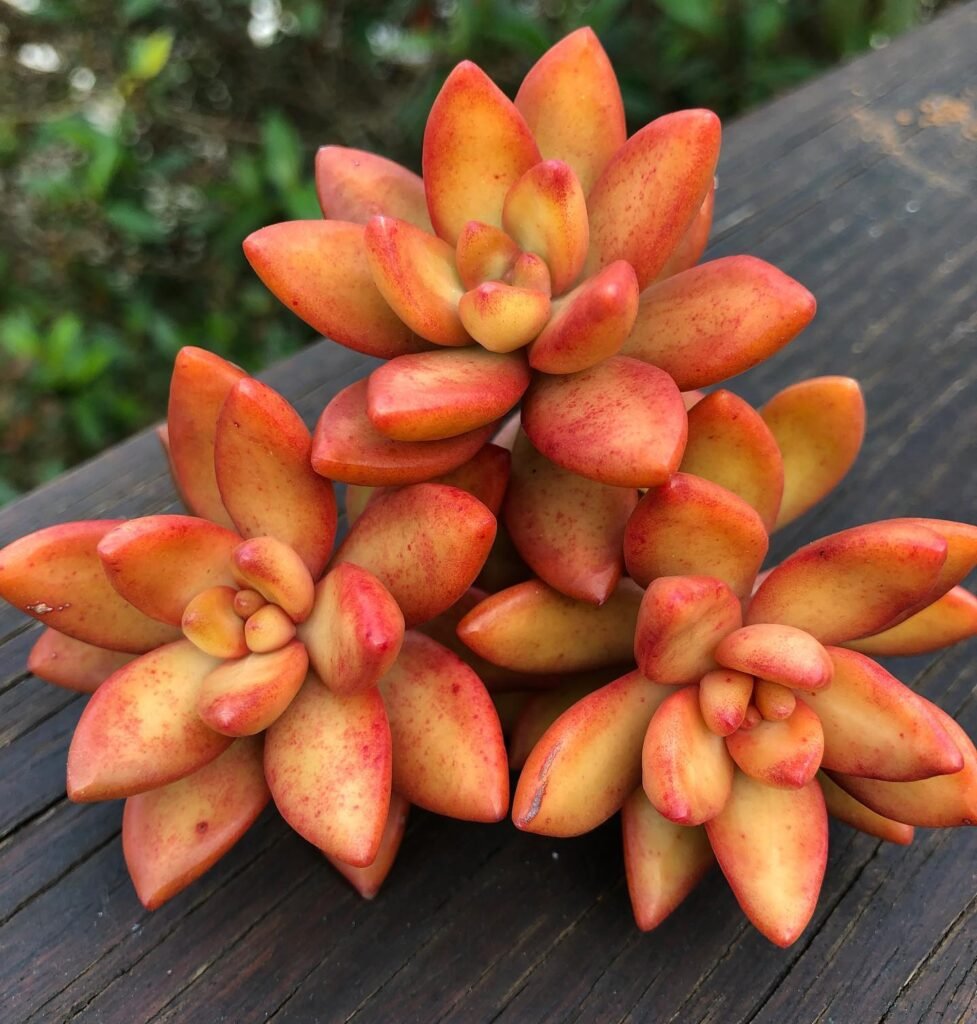
Sedum nussbaumerianum, also known as coppertone stonecrop, is a beautiful succulent that thrives in the United Kingdom. When it comes to light requirements, this plant prefers full sun to promote healthy growth and vibrant foliage. However, it’s important to note that direct and intense sunlight for prolonged periods can harm the leaves, so it’s best to provide it with some shade during the hottest part of the day.
To ensure the optimal growth of Sedum nussbaumerianum, it’s crucial to find a suitable spot in your garden where it can receive ample sunlight. Placing it in an area that gets at least 6-8 hours of direct sunlight per day will contribute to its vitality.
In addition to sunlight, the well-being of your Sedum nussbaumerianum also depends on the quality of the soil it’s planted in. Well-drained soil is essential for this succulent’s success, as it prevents waterlogged conditions that can lead to root rot. A mix of sandy or loamy soil with good drainage properties is ideal for promoting healthy root development and overall plant health.
By providing the right balance of full sun and well-drained soil, you can create an optimal environment for your Sedum nussbaumerianum to thrive and showcase its stunning foliage. Remember to monitor the sunlight exposure and adjust as needed to ensure the best conditions for this captivating succulent.

Watering Tips for Sedum nussbaumerianum (Coppertone Stonecrop)


Sedum nussbaumerianum, also known as coppertone stonecrop, is a drought-tolerant plant that requires infrequent watering. To ensure the health and longevity of your sedum, it’s essential to follow these watering tips:
- Allow the soil to dry out between waterings: Sedum nussbaumerianum is adapted to survive in dry conditions, so it’s important not to overwater it. Wait until the top few inches of soil are dry before watering again.
- Thoroughly water the plant: When watering, make sure to thoroughly soak the soil. This ensures that water reaches the roots, promoting healthy growth.
- Ensure well-drained soil: Sedum nussbaumerianum prefers well-drained soil to prevent waterlogged roots. Use a potting mix specifically formulated for succulents or add perlite or sand to improve drainage.

Fertilizing and Soil for Coppertone Stonecrop
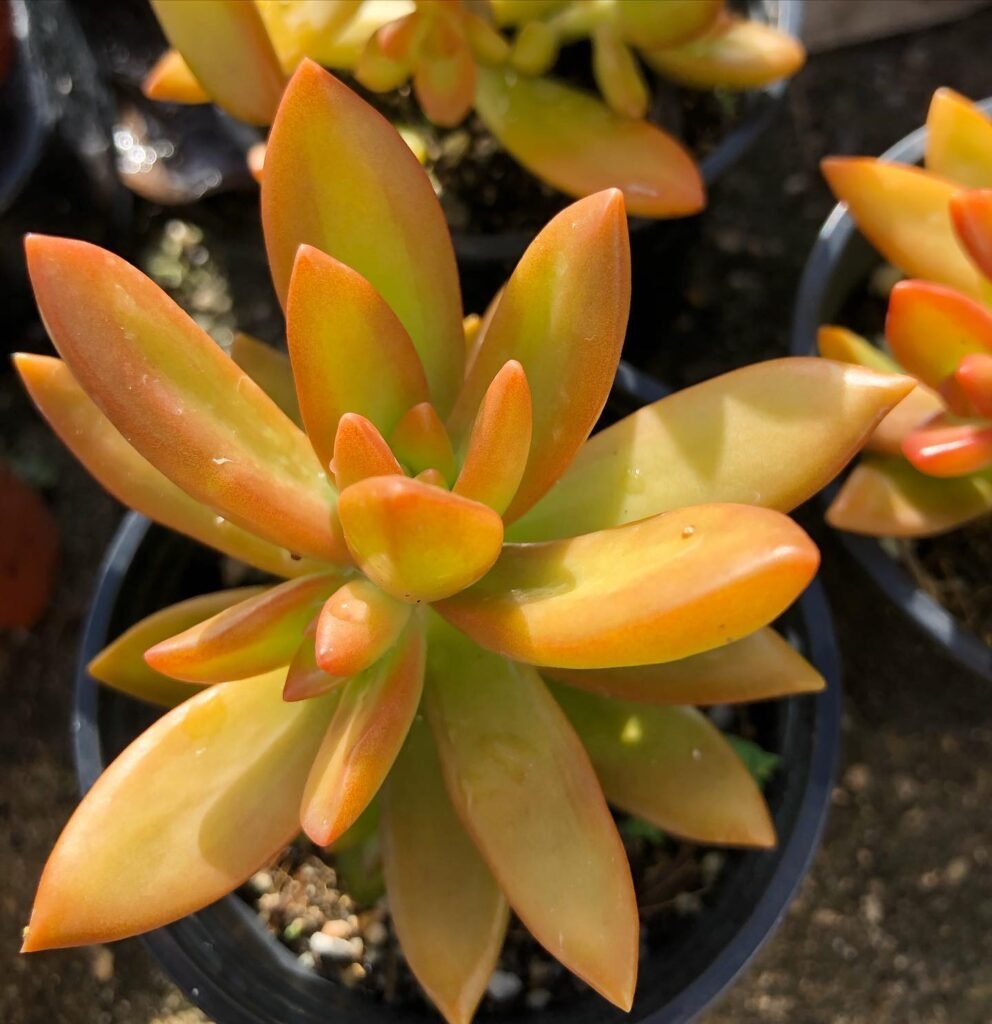

Sedum nussbaumerianum, also known as coppertone stonecrop, thrives in well-drained soil. To ensure optimal growth and health, it is beneficial to amend the soil with organic matter, such as compost. This helps improve drainage and provides essential nutrients to the plant.
When it comes to fertilizing Sedum nussbaumerianum, a balanced liquid fertiliser is recommended. During the growing season, I suggest applying a half-strength dose of a balanced liquid fertiliser every month. This will provide the plant with the necessary nutrients to support its growth and overall vitality.

Pruning and Maintenance of Sedum nussbaumerianum

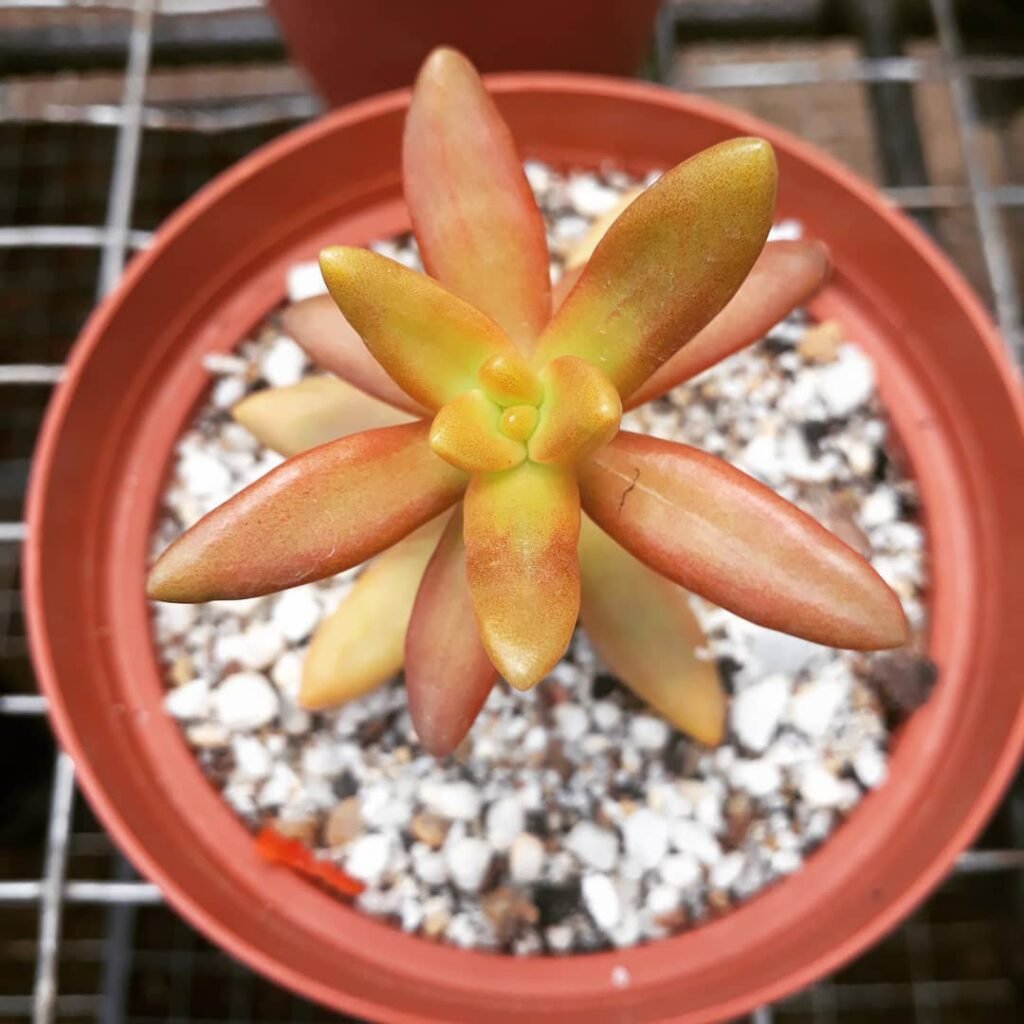
Sedum nussbaumerianum, also known as coppertone stonecrop, is an easy-care plant that requires minimal pruning and maintenance. Here are some tips to keep your Sedum nussbaumerianum looking its best:
1. Remove dead or damaged leaves and stems
To maintain the tidy appearance of your Sedum nussbaumerianum, it’s important to regularly check for any dead or damaged leaves or stems. Simply trim them off using clean, sharp pruning shears. This will not only improve the plant’s aesthetic appeal but also promote healthier growth.
2. Trim back in early spring
During the early spring, you can trim back your Sedum nussbaumerianum to encourage new growth and promote a more compact shape. Use pruning shears to cut back any straggly or leggy stems. This will help maintain a neat and bushy appearance.
3. Minimal maintenance required
Sedum nussbaumerianum is an easy-care plant that requires minimal maintenance. It is a true low-maintenance gem in any garden or indoor space. As long as you provide it with proper sunlight, well-drained soil, and occasional watering, it will thrive without much intervention from you.
- Remove dead or damaged leaves and stems for a tidy appearance
- Trim back in early spring to encourage new growth
- Minimal maintenance required for an easy-care plant

Propagating Sedum nussbaumerianum (Coppertone Stonecrop)

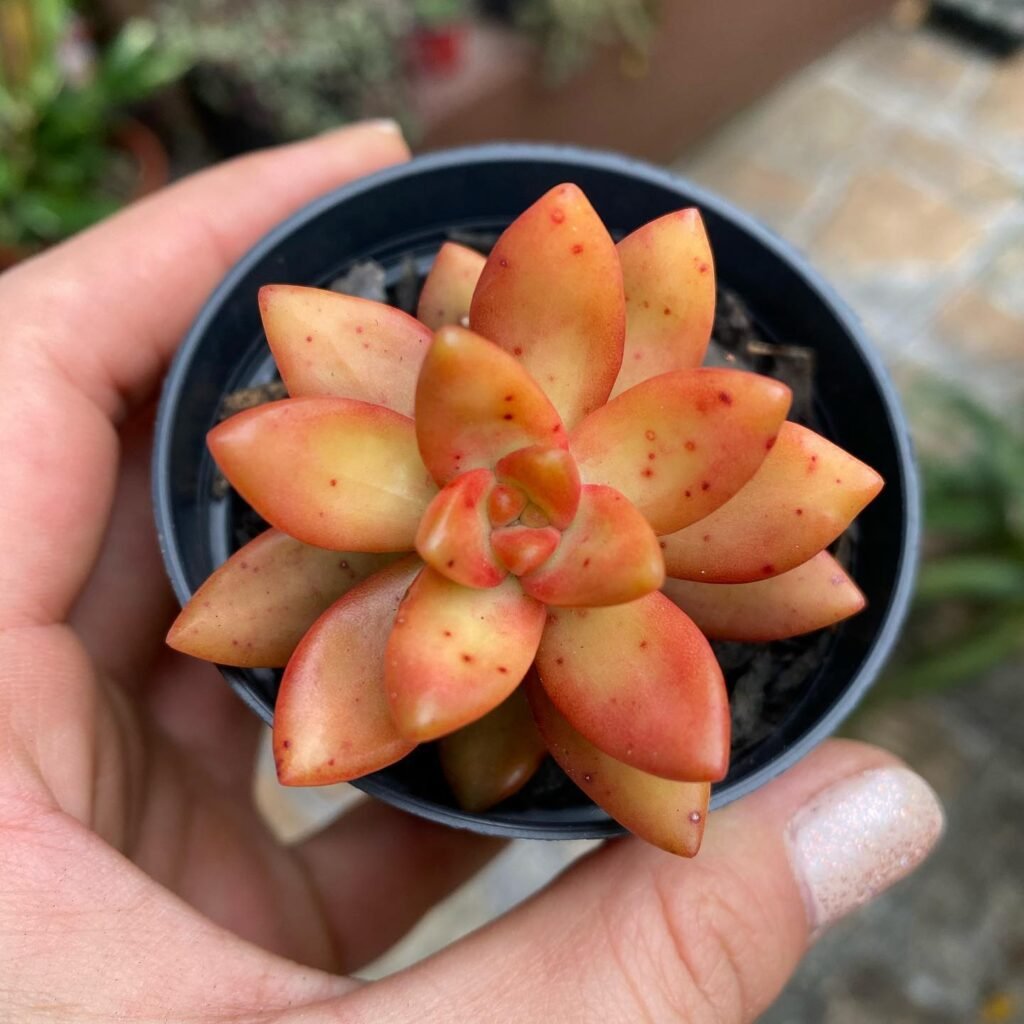
Propagating Sedum nussbaumerianum, also known as coppertone stonecrop, is a simple and rewarding process that allows you to expand your succulent collection. The best method for propagating this plant is through softwood cuttings. Here’s a step-by-step guide on how to propagate Sedum nussbaumerianum:
- Start by selecting a healthy stem from the mature plant that you wish to propagate. Make sure the stem has at least two sets of leaves.
- Carefully remove the lower leaves from the stem, leaving only a few leaves at the top.
- Prepare a well-draining soil mixture suitable for succulents. It should consist of a combination of potting soil, perlite, and coarse sand.
- Place the stem cutting in the soil, ensuring that the bottom end is inserted about 1 inch deep.
- Find a warm and bright location for the cutting. Avoid exposing it to direct sunlight, as this can cause the leaves to scorch.
- Water the cutting sparingly, keeping the soil slightly moist but not saturated. Overwatering can lead to rot.
- After a few weeks, you should start to see roots developing from the base of the cutting. This is a sign that the cutting has successfully rooted.
- Once the roots are well-established, you can transfer the cutting into its own pot, using the same well-draining soil mixture.

Repotting Tips for Sedum nussbaumerianum
Repotting Sedum nussbaumerianum, also known as coppertone stonecrop, is not something you need to do often. This resilient succulent has a shallow root system that doesn’t require frequent repotting. However, there are situations where repotting becomes necessary, such as when the plant outgrows its current pot or when the soil becomes compacted.
If you find that your Sedum nussbaumerianum needs repotting, follow these simple steps:
- Choose a larger pot: Select a pot that is slightly larger than the current one to allow room for the plant to grow. Ensure the new pot has drainage holes to prevent waterlogging.
- Use well-drained soil: Sedum nussbaumerianum thrives in well-drained soil. Prepare a mix of cactus or succulent potting soil and perlite or coarse sand to ensure proper drainage.
- Carefully transplant the plant: Gently remove the plant from its current pot, being careful not to damage the delicate roots. Loosen the roots and place the plant in the new pot, adding more soil around it to secure it in place.
- Water sparingly: After repotting, water the plant sparingly to avoid overwatering. Allow the soil to dry out between waterings to prevent root rot.
Remember to place your newly repotted Sedum nussbaumerianum in a location that receives bright indirect sunlight. Over time, the plant will settle into its new pot and continue to thrive in its well-drained soil. Enjoy watching your coppertone stonecrop grow and add beauty to your indoor or outdoor space!
 The Coppertone Stonecrop (Sedum nussbaumerianum) thrives on neglect, storing water in its leaves for drought resilience. Ideal for the forgetful gardener, it makes gardening inclusive for all skill levels.
The Coppertone Stonecrop (Sedum nussbaumerianum) thrives on neglect, storing water in its leaves for drought resilience. Ideal for the forgetful gardener, it makes gardening inclusive for all skill levels.Pest and Disease Control for Sedum nussbaumerianum
Sedum nussbaumerianum, also known as coppertone stonecrop, is a disease-free succulent that requires minimal pest control. However, it may occasionally encounter mealybugs, a common pest that can be easily managed.
To keep your Sedum nussbaumerianum healthy and pest-free, regularly inspect the plant for any signs of mealybugs. These small, white, cotton-like insects can cluster on the leaves and stems. If you notice any infestation, take immediate action to prevent further damage.
Removing Mealybugs
If you spot mealybugs on your Sedum nussbaumerianum, there are a few methods you can use to control them:
- Gently wipe the affected areas with a damp cloth to physically remove the bugs. Pay close attention to the undersides of leaves and stem crevices where they may hide.
- If there are only a few mealybugs present, you can use a cotton swab dipped in rubbing alcohol to target and eliminate them individually.
- For more persistent infestations, consider using a mild insecticidal soap. Dilute the soap according to the instructions and spray it onto the affected parts of the plant. Be sure to cover all surfaces, including the undersides of leaves.
After treating your Sedum nussbaumerianum, continue monitoring the plant for any new signs of mealybugs. Regularly check the leaves, stems, and nearby plantings to prevent the infestation from spreading. By being attentive and taking prompt action, you can keep your Sedum nussbaumerianum healthy and thriving.
Helpful Videos about Sedum nussbaumerianum (Coppertone Stonecrop)
Take a look at these cracking videos I found, all about looking after Sedum nussbaumerianum, known as Coppertone Stonecrop. They’re full of easy tips to help you get started with your plant. Ideal for beginners ready to try their hand at gardening!
- Sedum nussbaumerianum “Coppertone Sedum” makes excellent ground cover!
- Most vibrant succulent EVER! (Coppertone Stonecrop – Sedum nussbaumerianum)
FAQ about Sedum nussbaumerianum (Coppertone Stonecrop)

Wondering about the best ways to care for your Sedum nussbaumerianum, or Coppertone Stonecrop? You’re in the right spot! I’ve gathered all the essential questions to help you look after your plant with ease. From nailing the perfect watering schedule to addressing common challenges, I’ve got you covered.
Sedum nussbaumerianum, also known as Coppertone Stonecrop, is a succulent plant known for its striking orange to copper-coloured leaves, especially vibrant when exposed to plenty of sunlight.
Coppertone Stonecrop thrives in bright, direct sunlight. Choose a sunny spot in your garden or a south-facing windowsill for the best growth.
Water when the soil feels dry to the touch. Over-watering can harm the plant, so it’s better to err on the side of too little rather than too much.
Yes, it prefers well-draining soil. Mixing in sand or gravel with standard potting soil can create a suitable environment for your plant.
You can easily propagate Coppertone Stonecrop by leaf cuttings. Simply place a healthy leaf in soil and it should root and grow into a new plant.
Sedum nussbaumerianum is not frost-hardy. If you’re expecting cold weather, it’s best to bring outdoor plants inside or provide some form of frost protection.
Spring or early summer is ideal for repotting, as the plant will be entering its active growing period.
Keep an eye out for aphids and mealybugs. A gentle wash with soapy water or an appropriate insecticide can help keep these pests at bay.
Absolutely, as long as it gets plenty of sunlight. A bright window where it can soak up some direct rays is perfect.
In the UK, Coppertone Stonecrop usually grows up to 8 inches tall, depending on its environment and care.
Fertilizing isn’t strictly necessary, but a light feed with a succulent fertilizer in the spring can promote growth.
No, it’s considered non-toxic to pets, but it’s always best to keep plants out of reach to avoid any potential issues.
If the leaves start to look scorched or faded, it might be getting too much direct sunlight. Try moving it to a slightly shadier spot.
Yes, in well-drained soil and a sunny location, it can thrive directly in the ground.
It prefers sunlight. While it can survive in partial shade, its growth may be stunted and it may not thrive as well.
With proper care, Coppertone Stonecrop can live for several years, and through propagation, you can continue to grow new plants from your original.
While it’s possible, Coppertone Stonecrop prefers dry conditions and might not thrive in the humid environment of a terrarium.
Absolutely, it pairs well with other succulents and drought-tolerant plants in a mixed container or garden bed, provided they have similar care requirements.
I hope this FAQ has shed some light on how to look after your Sedum nussbaumerianum, or Coppertone Stonecrop. If you’ve got more queries, do pop them in the comments. I’m here to help out. Remember, we all kick off as novices in the plant world, and there’s always a bit more to discover as you journey on with your leafy mate.





